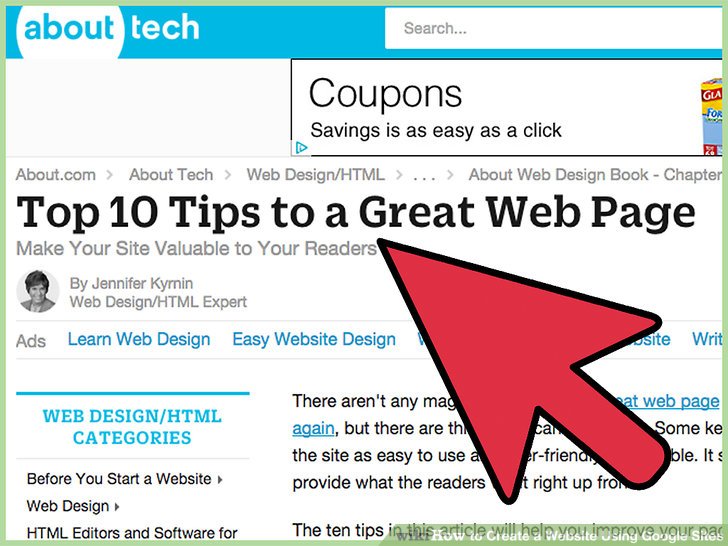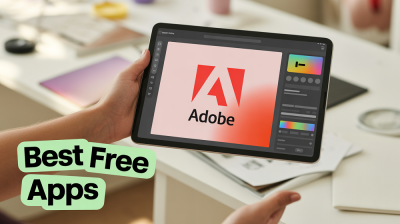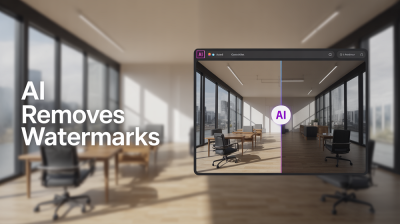Creating a website might sound daunting, but it’s easier than you think! With the right tools and guidance, you can have your very own site up and running in no time. In this blog post, we'll explore how you can use Google and Dailymotion to launch a website that showcases your content beautifully. Whether you’re an aspiring blogger, a business owner, or looking to share your creative work, these platforms provide fantastic, user-friendly options.
Why Use Google for Building Your Website?

Google offers a range of tools that simplify the website creation process. Here are some compelling reasons why you should consider using Google for your website:
- User-Friendly Interface: Google's tools are designed with ease of use in mind. Whether you’re a tech novice or a seasoned pro, you’ll appreciate how intuitive everything is.
- Integration with Google Services: When you build your website using Google, you have seamless access to various Google services like Analytics, Drive, and Search Console, enhancing your website's functionality.
- Templates Galore: Google Sites offers a variety of templates that are perfect for different types of content, making it easy to get started without having to start from scratch.
- Free Hosting: One of the best parts? Google offers free hosting for your site, allowing you to save money while still getting a reliable service.
- Collaborative Features: If you're working with a team, Google’s collaboration tools make it easy to invite others to edit and contribute to your website.
To get started, simply follow these easy steps:
- Sign In: Ensure you have a Google account. If you don’t, creating one is quick and easy.
- Create a New Site: Navigate to Google Sites, click on "Create," and choose a template that fits your vision.
- Customize Your Site: Use the drag-and-drop feature to add text, images, and videos. Make sure the content reflects your personality or brand!
- Publish: After finalizing everything, hit the publish button to take your site live. Don’t forget to choose a relevant domain name!
Building a website with Google not only streamlines the process but also places you in a network that’s expansive and supportive. Plus, the learning curve is gentle, which means you can focus more on creating quality content rather than wrestling with complicated tech issues.
So, whether you're looking to create a simple blog or a comprehensive portfolio, Google provides the right tools to get your site operational. The next step is understanding how Dailymotion can complement your website! Stay tuned for more insights!
Also Read This: Making Jewelry Dough at Home with Creative Tutorials on Dailymotion
3. Getting Started: Tools You Will Need
Before diving into the actual creation of your website, it’s essential to gather the right tools. Having the right tools not only streamlines the process but also ensures you set a solid foundation for your site. Let’s take a look at what you’ll need:
- A Google Account: Since we’re leveraging Google services, having a Google account is crucial. If you don’t have one, it’s easy to create. Just head over to Google's sign-up page and get started!
- A Domain Name: This is your website’s address on the internet (like www.yourwebsite.com). You can register a domain through various platforms such as Namecheap or GoDaddy. Choose something catchy and relevant!
- Web Hosting: While Google offers various tools, having a reliable web hosting service is crucial. Services like Bluehost or SiteGround are great options for beginners.
- A Website Builder: For ease of use, consider a website builder like Wix, Squarespace, or even WordPress. These platforms help you create beautiful websites without needing to know how to code!
- Graphics and Media Tools: Sometimes, adding visuals is essential to engage your audience. For graphics, you can use tools like Canva to create stunning images. For video content from Dailymotion, make sure to check their embedding options.
- Social Media Accounts: Connecting your website to your social media can substantially increase your reach. Make sure to set up accounts on platforms that align with your target audience.
With these tools, you’ll be well on your way to creating a successful website. Remember to take your time selecting the right options that suit your needs, as the right foundation can greatly influence your site’s success.
Also Read This: Understanding Programmatic Advertising on Dailymotion
4. Step-by-Step Guide to Creating Your Website
Now that you have your tools at the ready, let’s jump into the step-by-step process of creating your website. This can sound intimidating, but don’t worry! We’ll break it down into easily digestible steps.
Step 1: Choose Your Website Builder
Start by selecting the website builder you decided on earlier. If you're using WordPress, install it through your hosting service. For platforms like Wix or Squarespace, simply sign up and follow their onboarding process.
Step 2: Pick a Template
Once you've set up your account, browse through available templates. Most website builders offer a variety of designs tailored for different niches. Choose one that reflects the essence of your brand.
Step 3: Customize the Template
After selecting a template, it’s time to make it your own! Modify colors, fonts, and layout to fit your branding. Upload your logo and ensure that your website maintains a cohesive look. Use the drag-and-drop feature to rearrange elements for a more personalized touch.
Step 4: Create Your Pages
Common pages include:
- Home
- About Us
- Services/Products
- Contact
- Blog (if applicable)
Make sure to include engaging content that’s relevant to your audience, and don’t forget to incorporate keywords for SEO!
Step 5: Integrate Dailymotion Videos
If you want to showcase videos, Dailymotion is a fantastic option. Go to the video you want to embed, click on the share option, and select the embed code. Paste this code into your website where you want the video to appear. This is a great way to provide dynamic content that can engage your viewers!
Step 6: Preview and Test
Before going live, always preview your website. Check for broken links, typos, and ensure that all media loads correctly. It’s essential to provide a seamless user experience.
Step 7: Launch Your Website
Once you’re satisfied with your site, hit that publish button! Share your newly created website across social media and encourage friends and family to check it out.
Creating a website might seem like a daunting task, but by breaking it down into these easy steps, you’ll have your own online space in no time. Have fun with the process, and remember, it’s all about showcasing your unique voice!
Also Read This: Step-by-Step Swimming Techniques for Deep Water on Dailymotion
5. Using Dailymotion for Multimedia Integration
If you’re looking to spice up your website with engaging multimedia content, integrating videos from platforms like Dailymotion is a fantastic way to do it. Not only does it help capture your audience’s attention, but it also adds an interactive element that can enhance user experience. So, how can you effectively use Dailymotion on your site? Let’s dive in!
First things first, you’ll want to browse Dailymotion and find the videos that resonate most with your website’s theme or message. Dailymotion hosts a plethora of content ranging from music videos to educational clips, so there should be plenty of options. Once you find a suitable video, getting it onto your site is straightforward.
Here’s a quick rundown on how to embed a Dailymotion video:
- Find Your Video: Navigate to the video you want to use on Dailymotion.
- Get the Embed Code: Below the video, click on the share button and select the embed option. This will provide you with an HTML code snippet.
- Copy the Code: Copy the provided embed code to your clipboard.
- Paste it on Your Website: In your website’s HTML editor, paste the code where you want the video to appear. You can place it in a blog post, on a dedicated video page, or even as a part of your homepage.
It’s that easy! Remember, the key to integrating multimedia effectively is to ensure it aligns with your website's content. Mixing too many videos or unrelated content can confuse visitors, so choose wisely!
Additionally, keep an eye on video quality and loading times. A well-optimized video can boost engagement, while a slow-loading one might drive users away. Therefore, always test your website after embedding videos to ensure a smooth experience.
Lastly, consider how you can use Dailymotion’s analytics tools to further benefit your site. You can track how many views your embedded videos are getting and adjust your content strategy accordingly. The more you understand your audience, the better you can serve them!
Also Read This: How to Make a French Braid on Yourself
6. Design Tips for a Professional Look
Creating a website that looks polished and professional doesn’t have to be daunting! With some thoughtful design choices, you can make your site appealing and user-friendly. Here are some effective tips to elevate your website’s aesthetic:
- Choose a Clean Layout: A cluttered website can overwhelm visitors. Opt for a clear, organized layout with plenty of white space. This aids readability and helps guide users through your content.
- Consistent Color Scheme: Stick to a color palette that reflects your brand or theme. Use no more than three primary colors to maintain consistency, and ensure they complement each other.
- Select Easy-to-Read Fonts: Typography matters! Choose fonts that are legible and professional. Aim for a maximum of two different font types: one for headings and another for body text.
- Use High-Quality Images: Visuals are crucial. Make sure to use high-resolution images that are relevant to your content. Stock photos are an option, but customized graphics or authentic images make your site feel more personal.
- Mobile Responsiveness: With more users browsing on mobile devices, ensure that your design adapts well to different screen sizes. This is key for maintaining user engagement.
Don’t forget to include easy navigation tools. A simple, straightforward menu will make it easy for visitors to find what they are looking for quickly. You might also consider adding a search bar for convenience.
Lastly, always remember to keep your audience in mind when designing. Think about how they might interact with your site and tailor the experience to meet their needs. A professional-looking website is not only about aesthetics; it’s also about creating an enjoyable user experience.
With these tips, you're well on your way to designing a website that stands out and leaves a lasting impression. Don’t be afraid to experiment and let your unique personality shine through your design!
Also Read This: Master the Art of Applying Braces on Teeth with Dailymotion Videos
7. Understanding SEO Basics for Your New Website
Alright, let’s dive into a vital aspect of creating your own website: Search Engine Optimization (SEO). SEO might sound complex, but it's really about making your website more visible to search engines like Google. Why does that matter? Because when people search for information relevant to your site, you want them to find you easily!
Here are a few basic principles of SEO you should keep in mind:
- Keyword Research: Start by identifying the keywords or phrases that people might use when searching for content similar to yours. Tools like Google Keyword Planner can help you find popular search terms.
- Quality Content: Create content that is valuable, informative, and relevant to your audience. High-quality content is more likely to be shared and linked back to, boosting your site’s authority.
- On-Page SEO: This involves optimizing individual pages on your website. Useful practices include using your keywords in titles, headings, and throughout your content, as well as optimizing your meta descriptions and image alt text.
- Mobile Optimization: Ensure your website is mobile-friendly. With more people accessing the web via smartphones, a mobile-optimized site will rank better and provide a better user experience.
- Page Load Speed: The faster your website loads, the better the user experience and the higher your chances of ranking well in search results. Tools like Google PageSpeed Insights can help you assess and improve your site’s loading speed.
- Backlinks: Encourage other reputable websites to link back to yours. This is seen as a vote of confidence from other webmasters and can significantly enhance your site’s ranking.
Remember that SEO is a marathon, not a sprint. You won’t see overnight changes, but consistency and patience will pay off in the long run. Regularly update your content, monitor your SEO performance, and adapt to changes in algorithms.
To summarize, focusing on SEO can lead to increased visibility, more traffic, and better engagement with your audience. So, invest the time in understanding these basics, and your website will be set up for success!
Also Read This: Can You Upload Porn to Dailymotion? Understanding Content Guidelines
8. Publishing Your Website and Next Steps
Now that you’ve done the groundwork—designed your site, optimized for SEO, and created awesome content—it’s time to hit that “Publish” button! Exciting, right? Here’s how to smoothly transition from “in development” to “live on the web.”
Follow these easy steps:
- Choose a Domain Name: If you haven’t already, pick a memorable domain name that reflects the essence of your content. Keep it short, relevant, and easy to spell!
- Select a Hosting Provider: You’ll need a web host to publish your site. Consider options like Bluehost, SiteGround, or Google Cloud. Look for speed, reliability, and good support.
- Upload Your Website: Depending on how you’ve built your site (using builders or coding), you’ll either upload your files via FTP or simply publish through your website builder.
- Set Up Analytics: If you want to track your website’s performance, set up Google Analytics. It’s a fantastic tool for monitoring your visitors, their behavior, and how they find you.
- Test Your Website: Before promoting it, make sure everything works flawlessly. Click through the pages, test forms, and ensure your site looks good on both desktop and mobile devices.
- Promote Your Site: Once you publish, share your website on social media, join relevant forums, or even consider running ads to spread the word.
Publishing your website is just the beginning! Keep it updated with fresh content, engage with your audience, and don’t shy away from experimenting with new ideas. Monitor your traffic, analyze what works, and be open to adjustments as you grow your online presence.
Congratulations! You’ve taken a significant step towards establishing your online footprint. Embrace the process, stay curious, and watch your hard work transform into something incredible!
Conclusion: Recap and Final Thoughts
Creating a website using platforms like Google and Dailymotion can be a straightforward process if you follow the right steps. Here’s a quick recap of what we covered:
- Choosing Your Purpose: Determine the objectives of your website, whether for sharing videos, blogs, or a portfolio.
- Utilizing Google Tools: Use Google Sites for easy website creation with no coding skills needed.
- Embedding Dailymotion Content: Incorporate videos from Dailymotion to make your site engaging.
- Customizing Your Site: Explore themes, layouts, and designs that reflect your personal style or branding.
- Publishing and Promoting: Once you’re satisfied with your site, publish it and promote it on social media to reach a wider audience.
By combining the versatility of Google’s tools with the rich multimedia experience offered by Dailymotion, you can effectively build a website that showcases your creativity and attracts visitors. Remember, the key is to start simple and gradually enhance your site as your skills and audience grow.
In conclusion, taking these easy steps will empower you to create a dynamic online presence that can evolve with your needs.
 admin
admin








